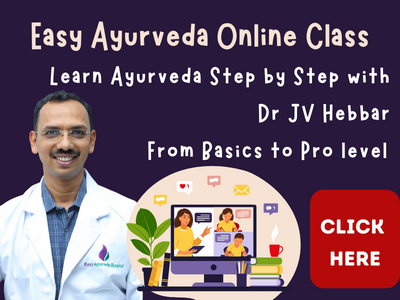The 12th chapter of Chikitsasthana of Sushruta Samhita is named as Pramehapidaka Cikitsitam Adhyaya. This chapter deals with Treatment of Diabetic Ulcers / Carbuncles.
अथातःप्रमेहपिडकाचिकित्सितंव्याख्यास्यामः।।१।।
यथोवाचभगवान्धन्वन्तरिः।।२।।
We will now expound Prameha pidaka chikitsa – treatment of diabetic eruptions; as revealed by the venerable Dhañvañtari.
शराविकाद्यानवपिडकाःप्रागुक्ताः;ताःप्राणवतोऽल्पास्त्वङ्मांसप्राप्तामृदयोऽल्परुजःक्षिप्रपाकभेदिन्यश्चसाध्याःताभिरुपद्भुतंप्रमेहिणमुपचरेत्।।३।।
In Nidana Sthana Section of the Samhita (Sushruta Nidana Chapter 6), Sarāvika and other nine kinds of Prameha Pidakas i.e. eruptions occurring in people suffering from prameha have already been described.
Curability of Prameha Pidakas –
Prameha Pidakas are curable in the below mentioned conditions –
– Manifested in strong patients
– Of mild nature,
– Localized only in the skin and muscles and not gone deeper into the tissues,
– They are soft and associated with less pain,
– They ripen and burst open quickly
Patients presenting with such eruptions having signs of curability shall be treated by the physicians.
Cikitsā: Method of treatment
तत्रपूर्वरूपेष्वपतर्पणंवनस्पतिकषायंबस्तमूत्रंचोपदिशेत्;एवमकुर्वतस्तस्यमधुराहारस्यमूत्रंस्वेदःश्लेष्माचमधुरीभवतिप्रमेहश्चाभिव्यक्तोभवति.तत्रोभयतःसंशोधनमासेवेत;एवमकुर्वतस्तस्यदोषाःप्रवृद्धामांसशोणितेप्रदूष्यशोर्फजनयन्त्युपद्रवान्वाकांश्चित्.तत्रोक्तःप्रतीकारःसिरामोक्षश्चएवमकुर्वतस्तस्यशोफोवद्धोऽतिमात्रंरुजोविदाहमापद्यते.शस्त्रप्रणिधानमुक्तंव्रणक्रियोपसेवाच;एवमकुर्वतस्तस्यपूयोऽभ्यन्तरमवदार्योत्सङ्गंमहान्तमवकाशंकृत्वाप्रवृद्धोभवत्यसाध्यः;तस्मादादितएवप्रमेहिणमुपक्रमेत्।।४।।
- Treatment in purvarupa stage only –
The patient is prescribed the below mentioned interventions in the premonitory stage itself –
– Apatarpana – fasting
– Vanaspati Kashaya – decoction of medicinal herbs,
– Basta mutra – goat’s urine for drinking
- Shodhana –
If the patients continue usage of sweet foods not adhering to the above-mentioned forms of interventions, their urine, sweat and kapha would develop sweetness. As a result, Prameha becomes well manifested in these patients.
In these patients purificatory therapies should be administered in the form of emesis and purgation, causing cleansing in both directions.
- What happens if these therapies are not done?
The doshas would get excessively aggravated if these therapies are not done. In turn, these doshas would vitiate the blood and muscles and produce swelling and other complications.
What to do in such conditions?
In such conditions, treatments mentioned in chapter 1 of Chikitsasthana for shotha should be done. Siravedha i.e. venepuncture too should be done.
- What happens if treatment is not done in this condition?
If these treatments are not done in this stage, it leads to an increase of swelling. The increased swelling is associated with pain and burning sensation.
What should be done then?
In such conditions, surgery will be a good option. It should be treated by using sharp surgical instruments. Following that, treatment for the wounds should be administered.
- What happens if treatment is not done in this condition?
If these interventions are not followed, pus gets increased in great quantities inside. This creates a big cavity and hence becomes incurable. Therefore, the patient of prameha should be properly treated from the early stage of its manifestation itself.
Dhāñvañtara Ghrta
भल्लातकबिल्वाम्बुपिप्पलीमूलोदकीर्यावर्षाभूपुनर्नवाचित्रकशटीस्नुहीवरुणकपुष्करदन्तीपथ्यादशपलोन्मितायवकोलकुलत्यांश्चप्रास्थिकान्सलिलद्रोणेनिष्क्वाथ्यचतुर्भागावशिष्टेऽवतार्यवचात्रिवृत्कम्पिल्लकभार्गीनिचुलशुण्ठीगजपिप्पलीविडङ्गरोधशिरीषाणांभागैरर्धपलिकैतप्रस्थंविपाचयेन्मेहश्वयथुकुष्ठगुल्मोदरार्श:प्लीहविद्रधिपिडकानांनाशनंनाम्नाधान्वन्तरम्।।५।।
Ingredients –
10 pala – 480 grams each of –
– Bhallataka
– Bilva
– Ambu
– Pippalimula
– Udakirya
– Varsabhu
– Punarnava
– Citraka
– Sati
– Snuhi
– Varunaka
– Puskaramula
– Danti and
– Pathya
1 prastha – 640 grams each of –
– Yava
– Kola
– Kulattha –
Method of preparation
All the above said ingredients should be boiled in 1 drona grams of water and reduced to one fourth of the quantity so as to prepare their decoction.
To this decoction, ½ pala – 20 grams each of –
– Vacha
– Trivrit
– Kampillaka
– Bharangi
– Nicula
– Sunthi
– Gajapippali
– Vidanga
– Rodhra
– Sirisa
To this, 1 prastha of ghee is added, boiled and ghee is cooked.
This medicated ghee thus prepared is called Dhanwantara Ghrta.
Benefits – Dhanwantara Ghrta effectively helps in curing the below mentioned diseases –
– Diabetes
– Swelling / dropsy
– Skin disorders including leprosy
– Abdominal tumours
– Abdominal enlargement
– Haemorrhoids
– Spleen disorders
– Abscess
– Eruptions
Madhumeha: Diabetes mellitus
दुर्विरेच्याहिमधुमेहिनोभवन्तिमेदोऽभिव्याप्तशरीरत्वात्.तस्मात्तीक्ष्णमेतेषांशोधनकुर्वीत।पिडकापीडिताःसोपद्रवाःसर्वएवप्रमेहामूत्रादिमाधुर्येमधुगन्धसामान्यात्पारिभाषिकीमधुमेहाख्यांलभन्ते।।६।।
It is very difficult to administer virechana – purgation therapy for patients of madhumeha since purging does not take place easily in them, since their body is full of fat. This is the reason why they should be administered with Tikshna shodhana i.e. strong cleansing therapies, mainly purgation.
Why the name Madhumeha?
All patients of prameha who have developed eruptions on their bodies and other complications along with sweetness in their urine etc. and also smell of their body resembling honey would be considered to have developed a condition called as Madhumeha. He or she will technically derive the name as madhumehi i.e. the person who has developed madhumeha. This name is given when the above said features are manifested.
Contraindication of Swedana
नचैतान्कथंचिदपिस्वेदयेत्.मेदोबहुत्वादेतेषांविशीर्यतेदेहःस्वेदेन।।७।।
Swedana – sudation should never be administered to the patients suffering from Madhumeha. This is because the large quantity of fat present in their body becomes greatly troubled by swedana.
These patients (of madhumeha) should never be given sudation therapy because these people will have an abundance of fat in their body and therefore the swedana, when administered, would trouble the person greatly.
Reasons for diabetic eruptions developing in the lower parts of the body
रसायनीनांचदौर्बल्यान्नेर्ध्वमुत्तिष्ठन्तिप्रमेहिणांदॊषाः.ततॊमधुमेहिनामधःकायेपिडकाःप्रादुर्भवन्ति॥८॥
In people suffering from prameha, there is weaknenss of Rasayanis i.e. channels of rasa. Due to this weakness, the doshas do not move in upward direction and hence do not accumulate in the upper parts of the body. Hence, the eruptions of madhumeha develop only in the lower parts of the body.
अपक्वानांतुपिडकानाशोफवत्प्रतीकारः.पक्वानांव्रणवदिति;तैलंतुव्रणारॊपणमेवादौकुर्वीत.आरग्वधादिकषायमुत्सादनार्थ.शालसारादिकषायपरिषेचने.पिप्पल्यादिकाषायंपारभोजनेषुपाठाचिन्नकशार्ङ्गेष्टाक्षुद्राबृहतीसारिवासॊमवल्कसप्तर्णारग्व्धकुटजमूलचूर्णनि मधुमिश्राणिप्राश्रीणियात्॥९॥
Unripe eruptions i.e. eruptions which have not undergone suppuration should be treated on the lines of treating sopha. The eruptions which have ripened should be treated on the lines of treating a wound.
Beneficial recipes for different purposes –
- For vrana ropana – Vrana ropana taila i.e. medicated oils prepared for the purpose of healing the wounds should be prepared and kept beforehand,
- For utsadana i.e. massaging – decoction of Aragvadhadi Gana group of herbs should be prepared and kept ready.
- For parisechana – decoction of herbs of Salasaradi Gana group of herbs should be prepared and kept ready for bathing or irrigating the wound.
- For pana and bhojana – decoction of herbs of Pippalyadi gana group of herbs should be used for drinking purposes and also should be used along with foods or for preparing foods.
- For consumption in the morning – the powder of the below mentioned should be used mixed with honey, every day –
– Patha
– Citraka
– Sarngesta
– Kshudra
– Brhati
– Sariva
– Smoavalka
– Saptaparna
– Aragvadha and
– Root of Kutaja
Salasaradi Leha
शालसारादिवर्णकशायंचतुर्भागावशिष्टमवतार्यपरित्राव्यपुनरुपनीयसाधयेत्.सिध्यतिचामलकोप्रप्रियाङ्दन्तीकृष्णाचस्तानचूर्णान्यावपेत्.एतदनुपदग्धंलेहीभूतमवतार्यानुगुजनिदम्यान.ततॊयथायोगमुपयुशीत.एषलेहःसर्वमेहानांहन्ता॥१०॥
Salasäradigana group of herbs should be boiled in water. It should be reduced to one fourth and filtered. It should be boiled again after filtering. While re-boiling, powder of the below said is added –
– Amalaka
– Rodhra
– Priyangu
– Danti
– Krshna Ayas
– Tamra
We should wait until the liquid gains confection like consistency. It is now removed from the contact of fire and kept in a vessel. The vessel should be concealed. This medicine is called Salasaradi Leha and should be used in suitable doses as and when required. This confection is said to cure all kinds of prameha.
Navayasa Loha
त्रिफलाचित्रविककटुकविडङमुस्तानांनवभागास्तावन्तएवकृष्णायचूर्णस्य.सत्सर्वमैकण्यंकृत्वायथायोगमात्रांसर्पिर्मधुभ्यांसंसृज्योपयुञ्जीत.एतन्नवायसम्एतेनजाठर्यभजाति.समोऽग्निराप्यायते,दुर्नामशोफपाण्डुकुष्ठरोगाविपाककासश्वासप्रमेहाचनभवन्ति॥१॥
Below mentioned should be taken in equal proportions, each ingredient one part, which sums up to nine parts –
– Triphala – Haritaki, Bibhitaki and Amalaki – one part each – 3 parts
– Chitraka – 1 part
– Trikatu – Pippali, Maricha and Shunti – 1 part each – 3 parts,
– Vidanga – 1 part
– Musta – 1 part
Krsna Ayas i.e. iron fillings or ash of pure iron should be taken in the same quantity i.e. 9 parts (equal to the mixed quantity of the above said ingredients).and mixed thoroughly with the powder of the above said herbs. This is called Navayasa Churna.
This powder should be consumed in suitable doses mixed with honey and ghee.
This churna (Navayasa Churna) prevents (cures) the below mentioned conditions –
– Abdominal enlargement
– Weak digestion
– Dropsy
– Anaemia
– Leprosy
– Dyspepsia
– Indigestion
– Cough
– Dyspnoea
– Diabetes
Loharista
शालसारादिनियूहचतुर्थाशावशेषिते।।
परिनुतेततःशीतेमधुमाक्षिकमावपेत्।।१२।।
फाणितीभावमापन्नंगुडशोधितमेवच।।
लक्ष्णपिष्टानिचूर्णानिपिप्पल्यादिगणस्यच।।१३।।
ऐकध्यमावपेत्कुम्भेसंस्कृतेपतभाविते।।
पिप्पलीचूर्णमधुभिःप्रलिप्तेऽन्तःशुचौदृढे।।१४।।
श्लक्ष्णानितीक्ष्णलोहस्यतत्रपत्राणिबुद्धिमान्।।
खदिराङ्गारतप्तानिबहुशःसन्निपातयेत्।।१५।।
सुपिधानंतुतंकृत्वायवपल्लेनिधापयेत्।।
मासास्त्रींश्चतुरोवाऽपियावदालोहसंक्षयात्।।१६।।
ततोजातरसंतंतुप्रातःप्रातर्यथाबलम्।।
निषेवेतयथायोगमाहारंचास्यकल्पयेत्।।१७।।
कार्यकद्वलिनामेषसन्नस्याग्नेःप्रसाधकः।।
शोफनुदगुल्महत्कुष्ठमेहपाण्ड्वामयापहः।।१८।।
प्लीहोदरहरःशीघ्रंविषमज्वरनाशनः।।
अभिष्यन्दापहरणोलोहारिष्टोमहागुणः।।१९।।
Salasaradi Gana group of herbs is taken. Its decoction is prepared by boiling the ingredients in water, reducing it to one fourth quantity and filtering it.
Once the decoction gets cooled, honey and maksika (iron pyrites) should be added and boiled again.
Boiling is continued until the liquid assumes the consistency of molasses. Now, refined jaggery and fine powder of Pippalyadi Gana group of herbs is added to it. The contents are now poured into a big pot whose inside has been smeared with ghee.
Then, the below mentioned are put into the liquid –
– Powder of Pippali
– Honey
– Thin sheets of Tiksna Loha which has been made red hot many times on the burning coal of wood of Khadira
Now, the pot in which the medicine is there is covered with a lid and sealed with mud plaster. The pot is now kept concealed in a heap of barley husk for a time period of 3-4 months, until all the metal sheets put into it get dissolved.
Once the medicine has attained fermentation, it is taken out of the pot. Now it is ready to be used and is called Loharishta. It shall be administered in suitable doses along with suitable foods.
Benefits –
This Loharishta has many benefits –
– It makes the obese persons thin,
– It enhances the weakened digestive fire,
It also cures the below mentioned conditions –
– Dropsy,
– Abdominal tumours,
– Leprosy,
– Diabetes,
– Anaemia,
– Disorders of spleen
– Enlargement of abdomen,
– Intermittent fever and
– Conjunctivitis
Prameha mukta lakṣaṇa: Signs of cure of diabetes
प्रमेहिणोयदामूत्रमपिच्छिलमनाविलम्।।
विशदंतिक्तकटुकंतदाऽऽरोग्यंप्रचक्षते।।२०।।
The patient of Prameha is considered to be healthy when the urine of the patient becomes –
– Non-slimy
– Non-turbid,
– Viscid and
– Bitter or pungent in taste
इतिश्रीसुश्रुतसंहितायांचिकित्सास्थानेप्रमेहपिडकाचिकित्सितंनामद्वादशोऽध्यायः।।१२।।
Thus ends the twelfth chapter by name Pramehapidaka Cikitsita in Cikitsā Sthāna of Suśruta Samhita.





